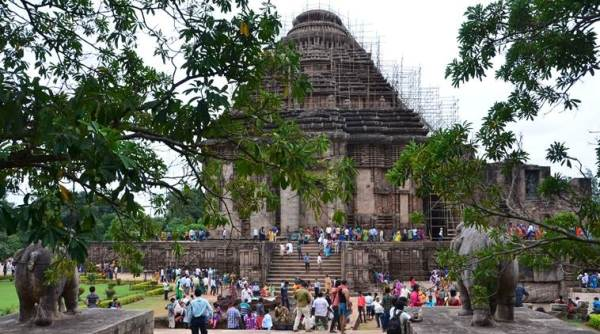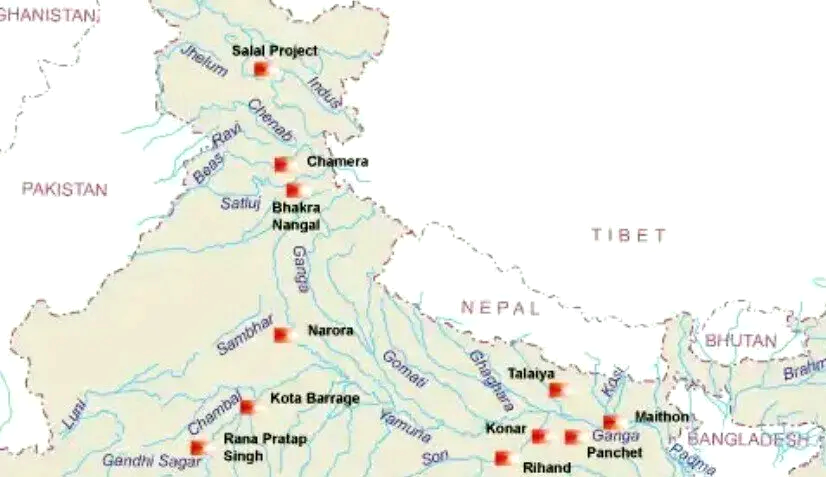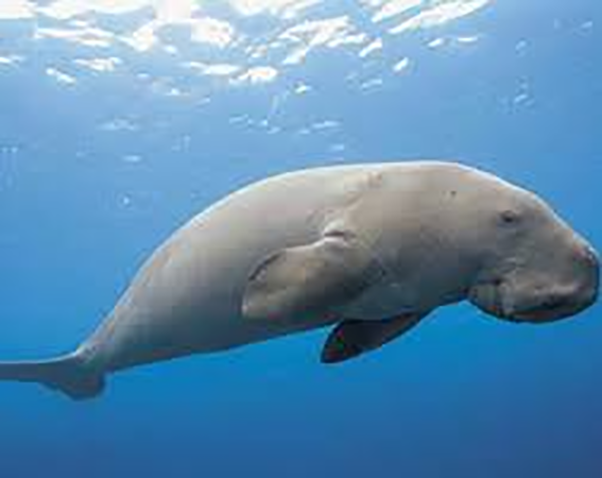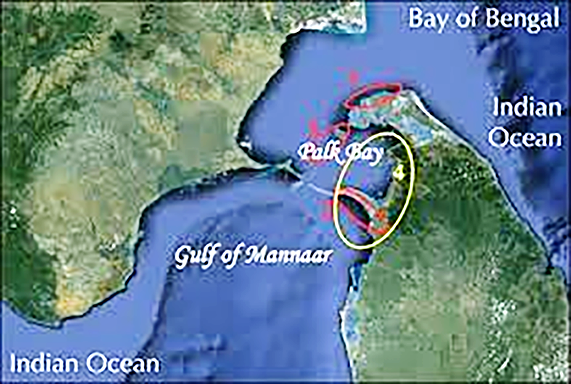Montreux Convention
For Prelims: Montreux Convention, Location of Black Sea, Bosporus and Dardanelles straits.
For Mains: Russia's War over Ukraine, Effect of Policies & Politics of Countries on India's Interests.
Why in News?
Turkey is set to activate the Montreux Convention in response to Russia's War over Ukraine.
- The declaration that situation in Ukraine had become a war, authorizes Turkey to activate the Montreux Convention and ban Russian war vessels from entering the Black Sea through the Bosporus and Dardanelles straits.
What is the Location of the Bosporus and Dardanelles straits?
- The Bosporus and Dardanelles straits, also known as the Turkish Straits or the Black Sea Straits, connect the Aegean Sea and the Black Sea via the Sea of Marmara.
- It is the only passage through which the Black Sea ports can access the Mediterranean and beyond.
- Over three million barrels of oil, about 3% of the daily global supply, mostly produced in Russia, Azerbaijan, and Kazakhstan, pass through this waterway every day.
- The route also ships large amounts of iron, steel, and agricultural products from the Black Sea coast to Europe and the rest of the world.
What is the Montreux Convention?
- The international agreement was signed by Australia, Bulgaria, France, Greece, Japan, Romania, Yugoslavia, the United Kingdom, the Soviet Union and Turkey and has been in effect since November 1936.
- The Montreux Convention Regarding the Regime of the Straits gives Turkey control over the water route between the Black Sea.
- Russia has a major navy base at Sevastopol, on the Crimean Peninsula.
- However, for ships to move to and from the Mediterranean – and beyond – they have to pass through two straits controlled by Turkey under the Montreux Convention.
- It sets limits on the passage of civilian vessels and military warships through the Dardanelles and the Bosporus straits. The key elements in the Montreux Convention are:
- In the event of a war, the pact gives Turkey the right to regulate the transit of naval warships and to block the straits to warships belonging to the countries involved in the conflict.
- Any country with coastline on the Black Sea – Romania, Bulgaria, Georgia, Russia or Ukraine – must notify Turkey eight days in advance of its intention to send vessels of war through the straits.
- Other countries, the ones that don’t border the Black Sea, must give Turkey 15 days’ advance notice.
- Turkey has used the convention’s powers before. During World War II, Turkey prevented the Axis powers from sending their warships to attack the Soviet Union – and blocked the Soviet navy from participating in combat in the Mediterranean.
What is the Role of Turkey in the Present Crisis?
- In the current situation, the Turkish government finds itself in a difficult position, as both Ukraine and Russia are important partners in critical energy and military trade agreements.
- Turkey, a NATO member since 1952, wants to strengthen its ties with the West while not upsetting Russia. Its control over these key straits may test its balancing act.
- In this context, Turkey has held that it cannot block all Russian warships accessing the Black Sea due to a clause in the pact exempting those returning to their registered base.
- Article 19 of the treaty contains an exception for the countries on the Black Sea that can effectively undermine Turkey’s power in blocking the Russian warships entering or exiting the Black Sea.
- Vessels of war belonging to belligerent powers, whether they are Black Sea Powers or not, which have become separated from their bases, may return thereto.
- This exception provides Russia with an alternate way to exploit the Montreux Convention, which would be to reassign some of its vessels to the Black Sea.
UNGA Resolution on Russia-Ukraine
For Prelims: United Nations General Assembly (UNGA), UN Security Council (UNSC), International Court of Justice, Nature of UN resolutions.
For Mains: Russia’s war over Ukraine, Effect of Policies & Politics of Countries on India's Interests.
Why in News?
Recently, India has abstained at the United Nations General Assembly (UNGA) to condemn Russia’s invasion of Ukraine. The emergency special session was convened by UNGA for discussing a resolution that called for Russia to unconditionally withdraw its troops.
- The resolution was discussed under the rubric of the “Uniting for Peace” resolution.
- The General Assembly session was convened after a similar resolution had failed to pass the U.N. Security Council (UNSC) when Russia exercised its veto.
What is Uniting for Peace Resolution?
- About: UN General Assembly resolution 377(V) is known as the Uniting for peace resolution which was adopted in 1950. The most important part of resolution is section A which states that where the Security Council, because of lack of unanimity of the permanent members, fails to exercise its primary responsibility for the maintenance of international peace and security, the General Assembly shall seize itself of the matter.
- Origin: The Uniting for Peace resolution was initiated by the United States, in October 1950, as a means of circumventing further Soviet vetoes during the course of the Korean War.
- Objective: Under this, the UNGA granted to itself the power to deal with threats to the peace if the UNSC fails to act after a veto by a permanent member.
- Such an interpretation sees the UNGA as being awarded 'final responsibility' for matters of international peace and security, by the UN Charter.
- Emergency Special Session (ESS): If not in session, the General Assembly may meet using the mechanism of the emergency special session. To date, 11 emergency special sessions have been convened.
- First ESS was instigated after France and UK veto over UNSC resolution 119 during the Suez Crisis 1956.
What are the Key Points of the resolution?
- The resolution, co-sponsored by 96 countries, needed two thirds of those present and voting to support it, for it to pass.
- It condemns the 24th February 2022 ‘special military operation’ by Russia over Ukraine.
- It says no territories acquired through force (Donetsk and Luhansk) will be recognised and calls for Russia to “immediately, completely and unconditionally” withdraw from Ukraine.
What is India’s Stand and Concerns?
- India’s Permanent Representative to the UN, T. S. Tirumurti, said that the “safe and uninterrupted passage” of Indian nationals, especially students, was India’s “foremost priority”.
- India also called for an “immediate ceasefire” and humanitarian access to conflict areas.
- India hoped that the second round of talks between Russia and Ukraine would yield positive results.
- Russia’s actions have left India in an uncomfortable position as it attempts to balance its interests with both Russia and the Western Countries.
- However, India’s desire to remain an “abstentionist” power is being called into question.
- Given its experiences in its own neighbourhood, with China and Pakistan, India is also wary of the implications of not condemning one country unilaterally attempting to change the borders it shares with another.
- India urges that all Member States demonstrate their commitment to the principles of the UN Charter, to international law and respect for sovereignty and territorial integrity of all states.
- A number of countries in India’s neighbourhood supported the resolution — Bhutan, Nepal, and the Maldives, for instance. Afghanistan, currently run by a militant organisation (the Taliban), and Myanmar, currently ruled by a junta (military), also voted in favour of it.
- Bangladesh, Pakistan and Sri Lanka, like India, abstained. China also abstained.
Are UN resolutions binding?
- Resolutions and decisions are formal expressions of the opinion or will of UN organs.
- The nature of the resolution determines if it is considered binding on States.
- Articles 10 and 14 of the UN Charter refer to General Assembly resolutions as "recommendations".
- The recommendatory nature of General Assembly resolutions has repeatedly been stressed by the International Court of Justice.
- However, some General Assembly resolutions dealing with matters internal to the United Nations, such as budgetary decisions or instructions to lower-ranking organs, are clearly binding.
- In general, resolutions adopted by the Security Council acting under Chapter VII of the Charter, are considered binding, in accordance with Article 25 of the Charter.
- However, they are subject to veto exercised by permanent members of UNSC.
Way Forward
- Given India’s aspirations for global leadership and the oft quoted motto of “Vasudhaiva Kutumbakam”. It may become necessary for India to engage more deeply with the conflict in Europe, which is now a global concern.
Impact of Russian Invasion on Global Chip Shortage
For Prelims: Conductors, Semiconductors, Insulators, use of semiconductors, examples of semiconductors.
For Mains: Reason for the semiconductor crisis, It's impact and possible solutions.
Why in News?
The ongoing conflict between Russia and Ukraine is worsening the global chip shortage crisis.
- Earlier, it was predicted that the chip shortage would extend until at least 2023.
- The prediction was based on the pandemic’s effect on a component that has become a life-line for most gadgets we use every day.
- The global semiconductor market is projected to grow by 8.8% to USD 601 billion, driven by a double-digit growth of the sensors and logic category and with the recent trends in electric mobility, automotive safety, and Internet of Things (IoT), the demand for semiconductors is only going to grow.
How did the Shortage Crisis Begin?
- Lockdowns increased the growth in sales of laptops to the highest in a decade.
- Home networking gear, webcams and monitors were snapped up as office work moved out of the office, and laptops were in demand for a while as schools shut.
- The stay-at-home rules also made several people pick up console-based gaming.
- These devices in high demand run on thumbnail-sized semiconductor piece (or pieces some time), performing various functions on a single device and manufacturers produce them as 200mm or 300mm wafers. These are further split into tiny chips.
- While the larger wafers are expensive and mostly used for advanced equipment, the devices that were in high demand needed smaller diameter wafers.
- But the manufacturing equipment required to make them were in short supply even before the pandemic began. That’s because the industry was moving in the direction of 5G, which required the expensive wafers.
- High consumer demand for low-end products, coupled with large orders from tech firms choked chip makers whose factories were also closed during lockdowns.
- As the industry gradually tried to pull itself out of the supply crunch, logistical complexities exacerbated the problem.
- And then the cost of moving containers across the world drove up the price of the core component used in most electronic devices and automobiles.
Why is the Russian Invasion Impacting Chip Shortage?
- Ukraine supplies rare gases used to produce semiconductor fab lasers, and Russia exports rare metals like palladium to make semiconductors.
- This combination is required to build chipsets that power a range of devices, from automobiles to smartphones.
- Russia and South Africa are the two largest producers of palladium. In 2021, Russia supplied 2.35 million ounces (66 million grams) of palladium.
- The silvery-white market would move into a severe deficit without those supplies, pushing the price up.
- While platinum and rhodium could be substituted for palladium, Russia is also a leading producer of the other platinum group metals.
- As Russia’s invasion into Ukraine escalates, the country is getting hit by Western sanctions, which could disrupt the country’s exports, leaving the semiconductor firms fewer options to source raw materials to make chip sets.
What is Palladium and what are its Uses?
- Palladium is often used as an alternative to gold in making various devices as the metal is highly malleable and resistant to corrosion.
- The rare metal is considered to be softer than gold, but is still much harder and durable than the yellow metal.
- This quality of palladium gives it more protection against an impact and a greater resistance to denting. So, automobile makers, electronics manufacturers and biomedical device producers prefer the silvery-white metal.
- Palladium is used in nearly all electronic devices, and the metal is a key to make chipsets and circuit boards. It is used to make Multi-Layer Ceramic Capacitors (MLCCs), which are important to make smartphone screens, stereo systems, and power circuit breakers.
How are Businesses and Governments Adapting to these Changes?
- Businesses are inversing their offshoring plans. They are considering ‘reshoring’ as an option to be shielded from global supply chain disruptions.
- Reshoring, also known as onshoring, is the opposite of offshoring and involves the returning of the production and manufacturing of goods to the company's original country.
- Intel has announced in February, 2022, USD20 billion for two new chip fabrication facilities in the state of Ohio (US). The company plans to invest USD100 billion over the next decade, and build eight more fab factories in the state.
- Intel is one of the few companies that both designs and makes its own chipsets.
- At the other end of the spectrum is government support to provide a conducive environment for businesses to set up facilities to build semiconductor factories.
- The US government is looking to pass the CHIPS Act, a law that would provide semiconductor firms with USD52 billion in subsidies to advance chip making in the country.
What is a Semiconductor Chip?
- It is an electric circuit with many components such as transistors and wiring formed on a semiconductor wafer. An electronic device comprising numerous of these components is called Integrated Circuit (IC), and can be found in electronic devices such as computers, smartphones, appliances, gaming hardware and medical equipment.
- These devices find widespread use in almost all industries, especially in the automobile industry.
- Semiconductors are materials which have a conductivity between conductors and insulators. They can be pure elements, silicon or germanium or compounds, gallium, arsenide or cadmium selenide.
What about India's Semiconductor Demand and Related Initiatives?
- India currently imports all chips and the market is estimated to touch USD100 billion by 2025 from USD24 billion now.
- The Union Cabinet has recently allocated an amount of Rs.76,000 crore for supporting the development of a ‘semiconductors and display manufacturing ecosystem’.
- It is a belated but welcome acknowledgment of the strategic significance of integrated circuits, or chips, to a modern economy.
- India has also launched the Scheme for Promotion of Manufacturing of Electronic Components and Semiconductors (SPECS) under which a budget outlay of Rs 3,285 crore is spread over a period of eight years for manufacturing of electronics components and semiconductors.
Fifth Session of the United Nations Environment Assembly
For Prelims: Single Use Plastics, Sustainable Development Goals, United Nations Environment Assembly, 2015 Paris Agreement.
For Mains: Single use plastics and related concerns, Environment Pollution and Degradation, Conservation.
Why in News?
Recently, the Fifth UN Environment Assembly concluded with 14 resolutions to strengthen actions for nature to achieve the Sustainable Development Goals.
- The overall theme for UNEA-5 was “Strengthening Actions for Nature to Achieve the Sustainable Development Goals”, which was hosted by the UN Environment Programme.
- The Assembly will be followed by "UNEP@50", a two-day Special Session of the Assembly marking UNEP's 50 anniversary where member states are expected to address how to build a resilient and inclusive post-pandemic world, as well as to endorse a draft Political Declaration.
What is the United Nations Environment Assembly?
- It is the governing body of the UN Environment Programme.
- It is the world’s highest-level decision-making body on the environment.
- The Assembly is made up of the 193 UN Member States and convenes every two years to advance global environmental governance.
- It was created in June 2012, during the United Nations Conference on Sustainable Development, also referred to as RIO+20.
What are the Key Highlights of the Session?
- Resolution to end Plastic Pollution:
- The world's ministers for the environment agreed to establish an Intergovernmental Negotiating Committee (INC) with the mandate to forge an international legally binding agreement to end plastic pollution.
- INC will begin its work in 2022, with the ambition of completing a draft global legally binding agreement by the end of 2024.
- This development is considered the most important environmental deal since the 2015 Paris Agreement.
- Under the legally binding agreement, countries will be expected to develop, implement and update national action plans reflecting country-driven approaches to contribute to the objectives of the instrument.
- They will be expected to promote national action plans to work towards the prevention, reduction and elimination of plastic pollution and to support regional and international cooperation.
- Resolution on Management of Chemicals and Waste:
- It supports the establishment of a comprehensive and ambitious science policy panel on the sound management of chemicals and waste and preventing pollution.
- The Ministerial Declaration recognises humanity's failure to date to manage chemicals and waste, a threat that is further aggravated by the Covid-19 pandemic through widespread use of single-use plastics and disinfectant chemicals.
- Resolution focused on Nature-based Solutions:
- In the spirit of the UN Decade for Ecosystem Restoration (2021-2030), it focuses on nature-based solutions: actions to protect, conserve, restore, sustainably use and manage ecosystems.
- The resolution calls on UNEP to support the implementation of such solutions, which safeguard the rights of communities and indigenous peoples.
- Resolution Prioritising Ecosystem Restoration:
- Three resolutions prioritize ecosystem restoration, biodiversity protection, resource efficiency, consumption and production patterns, climate mitigation and adaptation, job creation and poverty reduction.
- Resolution on Minerals and Metals:
- It calls for the development of proposals to enhance their environmental sustainability along their full lifecycle.
- Resolution on Sustainable Lake Management:
- It calls on member states to protect, conserve, and restore, as well as sustainably use lakes, while integrating lakes into national and regional development plans.
- Resolution on Sustainable and Resilient Infrastructure:
- It encourages member states to integrate environmental considerations in all their infrastructure plans.
- Resolution on Animal Welfare:
- It calls on member states to protect animals, protecting their habitats and meeting their welfare requirements.
- It recognised the risk for future pandemics and other health risks if humanity doesn't overhaul its patterns of interaction with nature by adopting a holistic approach such as 'One Health'.
- It calls on member states to protect animals, protecting their habitats and meeting their welfare requirements.
- Resolution on Biodiversity and Health:
- It calls on member states to reduce health risks associated with trade in live wildlife captured for the purposes of food, captive breeding, medicines and the pet trade, through regulation and sanitary controls.
- Resolution to Reduce Nitrogen Waste:
- It calls for accelerated actions to significantly reduce nitrogen waste from all sources, especially through agricultural practices, and saving USD100 billion annually.
- Resolution to strengthen measures Post Covid:
- The Assembly adopted a "resolution on the environmental dimension of a sustainable, resilient and inclusive post-Covid-19 recovery" to strengthen measures to achieve a sustainable, resilient and inclusive global recovery.
- Other Resolutions:
- Additional resolutions and decisions from the Assembly address the date and venue for UNEA-6, the future of the Global Environment Outlook (GEO) and the equitable geographical representation and balance in the secretariat of UNEP.
What was the Related Draft Resolution Proposed by India?
- The Indian draft resolution titled Framework for addressing plastic product pollution including single use plastic product pollution, was based upon the principle of immediate collective voluntary action by countries.
- But India has agreed to the setting up of an INC for a new, international and legally binding treaty.
- The INC is expected to present a legally binding instrument, which would reflect diverse alternatives to address the full lifecycle of plastics, the design of reusable and recyclable products and materials and the need for enhanced international collaboration to facilitate access to technology, capacity building and scientific and technical cooperation.
- Earlier, India had announced the Plastic Waste Management (Amendment) Rules, 2022, which notified the instructions on Extended Producer Responsibility (EPR) for plastic packaging.
- Plastic Waste Management Rules 2016 has been amended to fast-track the elimination of single-use plastics and promote alternatives.
Wet Bulb Temperature
For Prelims: Wet bulb temperature, Dry bulb temperature, Dew point temperature, Intergovernmental Panel on Climate Change, water vapour, Rising Sea level.
For Mains: Environmental Pollution & Degradation, Conservation, Wet bulb temperature, Impact of rising wet bulb temperature.
Why in News?
Recently, part 2 of the sixth assessment report of Intergovernmental Panel on Climate Change (IPCC), emphasised on the trend in the ‘Wet Bulb’ Temperature in South Asia.
- The trend will provide an index of the impact of heat and humidity combined — and its effect on health.
What is the Wet Bulb Temperature?
- Wet bulb temperature is the lowest temperature to which air can be cooled by the evaporation of water into the air at a constant pressure.
- WBT is a limit that considers heat and humidity beyond which humans can not tolerate high temperatures.
- The Wet Bulb temperature is the temperature of adiabatic saturation. This is the temperature indicated by a moistened thermometer bulb exposed to the air flow.
- An adiabatic process is one in which no heat is gained or lost by the system.
- Wet Bulb temperature can be measured by using a thermometer with the bulb wrapped in wet muslin.
- The adiabatic evaporation of water from the thermometer and the cooling effect is indicated by a "wet bulb temperature" lower than the "dry bulb temperature" in the air.
- The rate of evaporation from the wet bandage on the bulb, and the temperature difference between the dry bulb and wet bulb, depends on the humidity of the air.
- The evaporation is reduced when the air contains more water vapour.
- The wet bulb temperature is always lower than the dry bulb temperature but will be identical with 100% relative humidity (the air is at the saturation line).
- A wet-bulb temperature of 31°C is exceedingly harmful to humans, while a temperature of 35°C is unsurvivable for more than 6 hours.
What are Dew Point and Dry Bulb Temperatures?
- Dry Bulb Temperature:
- The Dry Bulb temperature, usually referred to as "air temperature", is the air property that is most commonly used. When people refer to the temperature of the air they are normally referring to the dry bulb temperature.
- The Dry Bulb Temperature refers basically to the ambient air temperature. It is called "Dry Bulb" because the air temperature is indicated by a thermometer not affected by the moisture of the air.
- Dry-bulb temperature can be measured using a normal thermometer freely exposed to the air but shielded from radiation and moisture.
- The dry-bulb temperature is an indicator of heat content.
- Dew Point Temperature:
- The Dew Point is the temperature where water vapour starts to condense out of the air (the temperature at which air becomes completely saturated).
- Above this temperature the moisture stays in the air.
- If the dew-point temperature is close to the dry air temperature - the relative humidity is high.
- If the dew point is well below the dry air temperature - the relative humidity is low.
- The Dew Point temperature is always lower than the Dry Bulb temperature and will be identical with 100% relative humidity (the air is at the saturation line).
- The Dew Point is the temperature where water vapour starts to condense out of the air (the temperature at which air becomes completely saturated).
How will this Trend Impact India?
- Lucknow and Patna, were among the cities predicted to reach wet-bulb temperatures of 35°C if emissions continued to rise, while Bhubaneswar, Chennai, Mumbai, Indore, and Ahmedabad are ‘at risk’ of reaching wet-bulb temperatures of 32°C-34°C with continued emissions.
- With continuing emissions, parts of central India including Vidarbha are at risk of exceeding wet bulb temperatures of 32-34°C.
- This will have consequences such as a rise in heat-wave linked deaths or reduced productivity.
- Relying on artificial cooling to cope with the growing heat would supercharge energy demand and leave many people dangerously exposed to power failures.
- It would also abandon the most vulnerable members of society and doesn’t help those who have to venture outside.
Konark Sun Temple to Run on Solar Energy
For Prelims: Archaeological Survey of India (ASI), Konark Sun Temple, Kalinga Architecture, UNESCO world heritage site.
For Mains: Indian Culture - Salient aspects of Art Forms, Steps taken for Renewable Energy.
Why in News?
Konark is going to be the first model town in Odisha to shift from grid dependency to green energy.
- The Odisha government has issued a policy guideline in this regard.
- In May 2020, the central government launched a scheme for solarisation of Konark Sun Temple and Konark town in Odisha.
What are the Guidelines of the Policy?
- Under the guidelines, the state has targeted to generate 2,750 megawatt (MW) from renewable energy sources like the sun, wind, biomass, small hydro and waste-to-energy (WTE), etc. by 2022-end.
- The state also targets to generate 2,200 MW from solar energy and a part of it will be utilised to run the Sun Temple and Konark town on solar energy.
- Konark’s transition to renewable energy is part of an ambitious plan by the Union Ministry of New and Renewable Energy (MNRE).
How is this step a significant Step and what are related Challenges?
- The shifting from grid to solar energy will help reduce the electricity consumption of the Sun Temple.
- The financial benefit from solar energy will help divert spending on other developmental work of the temple.
- Odisha faces many challenges in setting up huge solar power plants.
- Besides this, land acquisition is another major challenge in setting up solar power plants.
- While coastal areas are cyclone-prone, some parts of Odisha have dense forests whereas land is expensive in densely-populated areas.
What do we Know about Konark Temple?
- Konark Sun Temple, located in the East Odisha near the sacred city of Puri.
- Built in the 13th century by King Narasimhadeva I (AD 1238-1264). Its scale, refinement and conception represent the strength and stability of the Eastern Ganga Empire as well as the value systems of the historic milieu.
- The Eastern Ganga dynasty also known as Rudhi Gangas or Prachya Gangas.
- It was the large Indian royal dynasty in the medieval era that reigned from Kalinga from as early as the 5th century to the early 15th century.
- The beginnings of what became the Eastern Ganga dynasty came about when Indravarma I defeated the Vishnukundin king.
- The temple is designed in the shape of a colossal chariot.
- It is dedicated to the sun God.
- The Konark temple is widely known not only for its architectural grandeur but also for the intricacy and profusion of sculptural work.
- It marks the highest point of achievement of Kalinga architecture depicting the grace, the joy and the rhythm of life in all its wondrous variety.
- It was declared a UNESCO world heritage site in 1984.
- There are two rows of 12 wheels on each side of the Konark sun temple. Some say the wheels represent the 24 hours in a day and others say the 12 months.
- The seven horses are said to symbolise the seven days of the week.
- Sailors once called this Sun Temple of Konark, the Black Pagoda because it was supposed to draw ships into the shore and cause shipwrecks.
- Konark is the invaluable link in the history of the diffusion of the cult of Surya, which originating in Kashmir during the 8th century, finally reached the shores of Eastern India.
Other Important Monuments in Odisha
Bhakra Beas Management Board (BBMB)
For Prelims: Bhakra Beas Management Board (BBMB), Bhakra Nangal Dam, Indus Water Treaty.
For Mains: Indus Water Treaty and related issues, Government Policies & Interventions.
Why in News?
Recently, the Central government has decided to adopt a new criterion for selecting members of the Bhakra Beas Management Board (BBMB).
What Changes have been made to the BBMB rules?
- A notification has been issued to amend the BBMB Rules 1974, thereby changing the criteria for the selection of whole-time members of the Board.
- As per the BBMB Rules, 1974, the member (power) in BBMB was from Punjab and the member (irrigation) was from Haryana but the requirement has been removed in the amended rules.
- New rules specify technical qualifications for the appointments and pave the way for appointment of the members from across India and not only Punjab and Haryana.
- The new rules have been opposed by the engineers’ fraternity, farmers as well as the political parties of Punjab.
- The engineers have pointed out that hardly any engineer would qualify for appointment as per the new specifications, which appear to be tailor-made for some personnel to be appointed from outside Punjab and Haryana.
- On the other hand, officials have argued that the changes have been made in pursuance to a judgement of the Punjab and Haryana High Court in the case of Jagmohan Singh Vs Union of India.
What is the Genesis of the BBMB?
- The genesis of BBMB lies in the Indus Water Treaty signed between India and Pakistan in 1960.
- Under the treaty, waters of three eastern rivers— Ravi, Beas and Sutlej — were allotted to India for exclusive use while Indus, Chenab and Jhelum rivers were allocated to Pakistan.
- In India, a master plan was drawn to harness the potential of these rivers for providing assured irrigation, power generation and flood control.
- Bhakra and Beas projects form a major part of this plan and were established as a joint venture of the then undivided Punjab and Rajasthan.
- Following the reorganisation of Punjab on 1st November 1966, and the creation of the state of Haryana, the Bhakra Management Board was constituted under Section 79 of the Punjab Reorganisation Act, 1966.
- The administration, maintenance and operation of Bhakra Nangal project was handed over to Bhakra Management on 1st October 1967.
- The Beas Project Works, on completion, were transferred from Beas Construction Board (BCB) to Bhakra Management Board as per the provisions of Section 80 of the Punjab Reorganisation Act, 1966.
- Pursuant to this Bhakra Management Board was renamed as Bhakra Beas Management Board (BBMB) w.e.f. 15th May 1976.
- Since then, BBMB regulates supply of water and power to Punjab, Haryana, Rajasthan, Himachal Pradesh, Delhi and Chandigarh.
What is the Constitution of the BBMB Management?
- It includes a chairperson and two whole time members who are from the partner states of Punjab and Haryana.
- They are designated as Member (Power) and Member (Irrigation) from Punjab and Haryana, respectively.
- There is representation from each member state including Rajasthan and Himachal Pradesh as nominated by the respective state governments.
- The total strength of BBMB is about 12,000 employees and out of these 696 are Group A officers and are posted from the partner states.
What is the Beas Project?
- The Beas-Satluj link scheme consists of a 76.2 m high rockfill diversion dam at Pondoh on Beas River in Mandi district (HP).
- Pong is a multipurpose earth & rockfill dam on Beas River, 40 km from Mukerian, Mukerian District, Himachal Pradesh. It is located in the Himalayan foot-hills downstream of Pandoh dam. BBMB commissioned the project in 1978-83.
What are the Features of the Bhakra Nangal Dam?
- Bhakra Dam is a concrete gravity dam across the Sutlej River and is near the border between Punjab and Himachal Pradesh in northern India.
- It is India’s second tallest at 225.55 m high next to the 261m Tehri Dam.
- Its reservoir, known as the “Gobind Sagar”, stores up to 9.34 billion cubic meters of water.
- Nangal dam is another dam downstream of Bhakra dam. Sometimes both the dams together are called Bhakra-Nangal dam though they are two separate dams.
Dugong Conservation Reserve in Palk Bay
Why in News?
Recently, the Tamil Nadu government has decided to go ahead with the establishment of India's first conservation reserve for the Dugong in Gulf of Mannar, Palk Bay.
- It facilitates India to act as the leading nation in the South Asia Sub-region with respect to dugong conservation.
What are Dugongs?
- About:
- Dugong (Dugong dugon) also called ‘Sea Cow’ is one of the four surviving species in the Order Sirenia and it is the only existing species of herbivorous mammal that lives exclusively in the sea including in India.
- Dugongs are an important part of the marine ecosystem and their depletion will have effects all the way up the food chain.
- Distribution and Habitat: They are found in over 30 countries and in India are seen in the Gulf of Mannar, Gulf of Kutch, Palk Bay, and the Andaman and Nicobar Islands.
- Conservation Status:
- IUCN Red List status: Vulnerable
- Wild (Life) Protection Act, 1972: Schedule I
- CITES: Appendix I
- Threats:
- Dugongs graze on seagrass and the loss of seagrass beds due to ocean floor trawling is one of the most important factors behind decreasing dugong populations in many parts of the world.
- Trawling is a method of fishing that involves pulling a fishing net through the water behind one or more boats.
- It is harmful to the environment because it damages the seafloor, coral reefs and other marine animals.
- Human activities such as the destruction and modification of habitat, pollution, rampant illegal fishing activities, vessel strikes, unsustainable hunting or poaching and unplanned tourism are the main threats to dugongs.
- Dugong meat is consumed under the wrong impression that it cools down human body temperature.
- Dugongs graze on seagrass and the loss of seagrass beds due to ocean floor trawling is one of the most important factors behind decreasing dugong populations in many parts of the world.
- Steps Taken for Conservation:
- In February 2020, India hosted the 13th Conference of Parties (CoP) of the Convention on the Conservation of Migratory Species of Wild Animals (CMS), an environmental treaty under the aegis of the United Nations Environment Programme (UNEP).
- The Government of India has been a signatory to the CMS since 1983.
- India has signed non-legally binding Memorandums of Understanding (MoU) with CMS on the conservation and management of Siberian Cranes (1998), Marine Turtles (2007), Dugongs (2008) and Raptors (2016).
- The Ministry of Environment, Forests and Climate Change constituted a ‘Task Force for Conservation of Dugongs’ to look into issues related to conservation of dugongs and implementation of the ‘UNEP/CMS Dugong MoU’ in India.
- It also facilitates India to act as the leading nation in the South Asia Sub-region with respect to dugong conservation.
- In February 2020, India hosted the 13th Conference of Parties (CoP) of the Convention on the Conservation of Migratory Species of Wild Animals (CMS), an environmental treaty under the aegis of the United Nations Environment Programme (UNEP).
What are Conservation Reserves?
- Conservation reserves and community reserves are terms denoting protected areas of the country which typically act as buffer zones to or connectors and migration corridors between established national parks, wildlife sanctuaries and reserved and protected forests.
- Such areas are designated as conservation areas if they are uninhabited and completely owned by the Government of India but used for subsistence by communities and community areas if part of the lands are privately owned.
- These protected area categories were first introduced in the Wildlife (Protection) Amendment Act of 2002 − the amendment to the Wildlife Protection Act of 1972.
- These categories were added because of reduced protection in and around existing or proposed protected areas due to private ownership of land and land use.

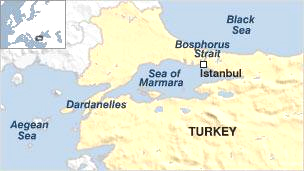
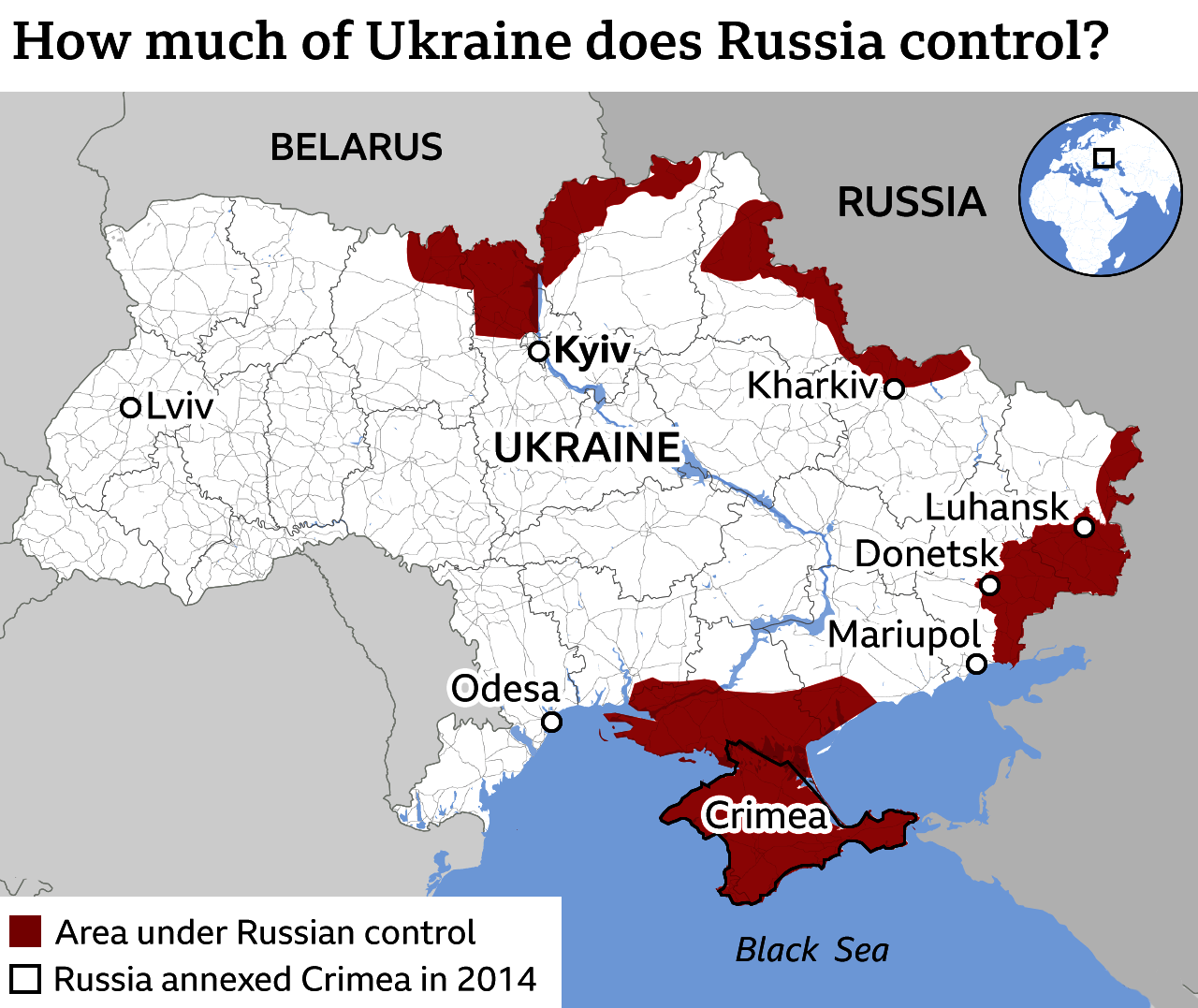
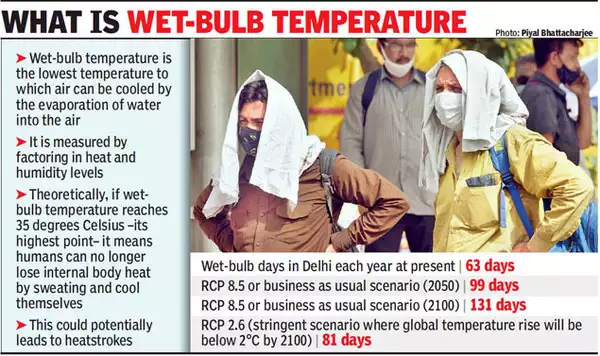
.png)
